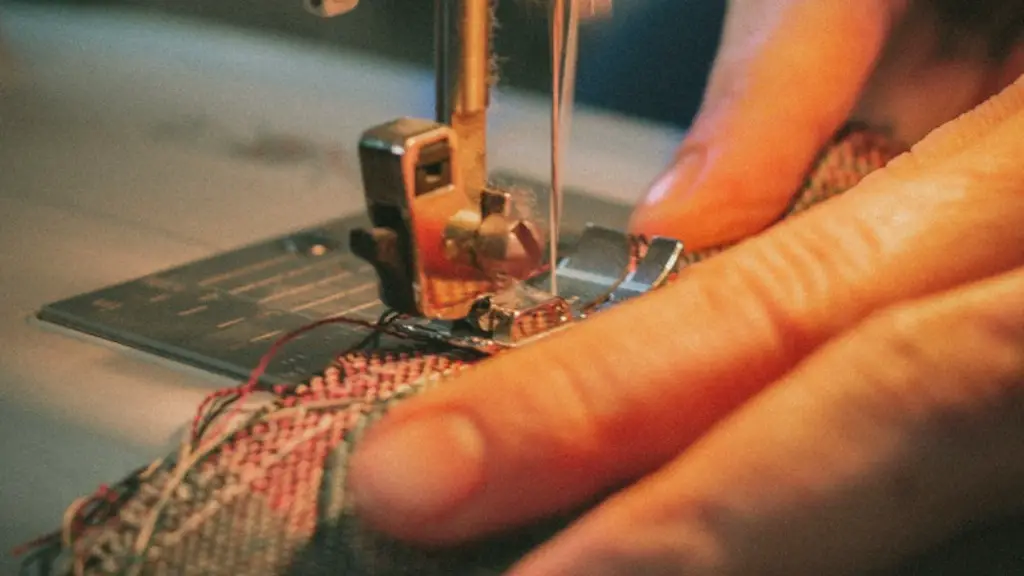What is a Reversed Stitch On a Sewing Machine
Reverse stitching or basting is a feature of some sewing machines that allow the user to sew backwards over the same stitch line, thus locking the stitch in place. This is often done on the edges of fabric seams or to brace reinforced edges.Many sewing machines, Singer sewing machines included, have a feature that sews in reverse with the same stitch length and width as the forward stitching.
Why Reverse Stitch On a Singer Sewing Machine
Reversing stitches are used for several reasons. Starting off, by reversing at the start of the stitch line or at the end, thread tails are sewn down, preventing them from coming out of the seam.
In addition, using a reversed stitch helps keep seams together when stitching over bulkier fabrics. This is especially helpful when topstitching, edgestitching, and seaming sleeves.
Reversed stitches are also great for creating guide lines for quilting and patchwork, reinforcing pocket openings, and reinforcement stitching. Using a reversed stitch helps reduce the bulk of the fabric when sewing multiple layers together.
Reversing the stitch also helps strengthen areas of your projects which endure frequent stress and wear.Banding on necklines, cuffs, waistbands, and hems are good examples of when to use a reversed stitch.
How To Reverse Stitch on an Old Singer Sewing Machine
Each Singer brand is different, so refer to your machine’s manual on how to reverse stitch. Generally, the reverse lever is to the right of the needle.
When you’re reverse sewing, take it slow. Accelerating can cause tension problems and off-balanced stitches.
At the beginning and end of the stitches, and as many times in between as you wish, your Singer will sew backwards if you just keep the reverse lever down.
To finish sewing and come to an end at the beginning of the stitching, remove your reverse lever and turn the hand wheel once so the needle is at its highest point, lift the presser foot, and turn the fabric so you can start sewing forward from the beginning.
Common Problems When Reversing in a Singer Sewing Machine
It’s common for thread to break or tangles to occur in the bobbin when you’re reverse stitching. This can easily happen if too much fabric is being fed through during the reverse stitching. Try giving it fewer layers, or changing the pressure setting on the presser foot.
In some cases, reversal simply won’t occur due to motor and tension issues. Clearing out your machine, cleaning and lubricating it, readjusting the tensions, and replacing the needles, can help solve the issue.
Tips For Reversing Stitch on an Old Singer Sewing Machine
Remember that when reverse stitching, the presser foot needs to remain down. This ensures the fabric feeds correctly and smoothly through the machine.
It’s also best to use a universal needle size for reverse stitching. This helps the thread catch and interlock with the fabric.
Lastly, when reverse stitching and finished knotting, cut the threads from the bobbin and needle side at the same place and the same amount on each side so the threads are all the same length.
Types of Reverse Stitching on Different Singer Sewing Machines
Many Singer sewing machines have multiple features for reversing stitching. There is regular reverse, reverse-lock, and single-step reverse, as well as a triple-rows auto-tacking function and a back-tack function.
The most useful reverse stitch feature is the reverse-lock, which allows you to lock the stitches in an area such as a buttonhole or hem of a garment.
Using the single-step reverse stitch helps you back tack one step at a time. You can also find the triple-row auto-tacking function useful for overlapped seams and hems.
Conclusion: Maintenance is Key To Reversing Stitch on an Old Singer Sewing Machine
Reversing stitching is a useful technique that is found on several Singer models of sewing machines. It should be utilized for a variety of projects to give you better results. However, it is important to keep your machine well-cleaned, lubricated and threaded so that you can use the feature correctly and to its full potential.




